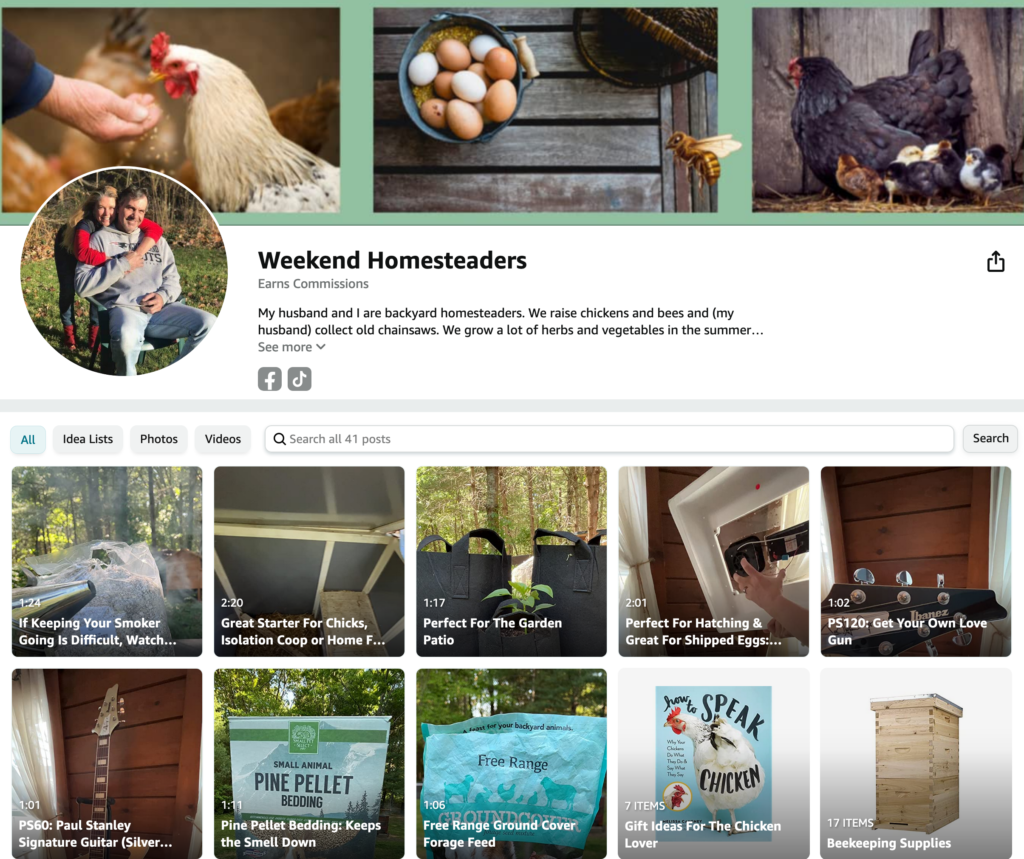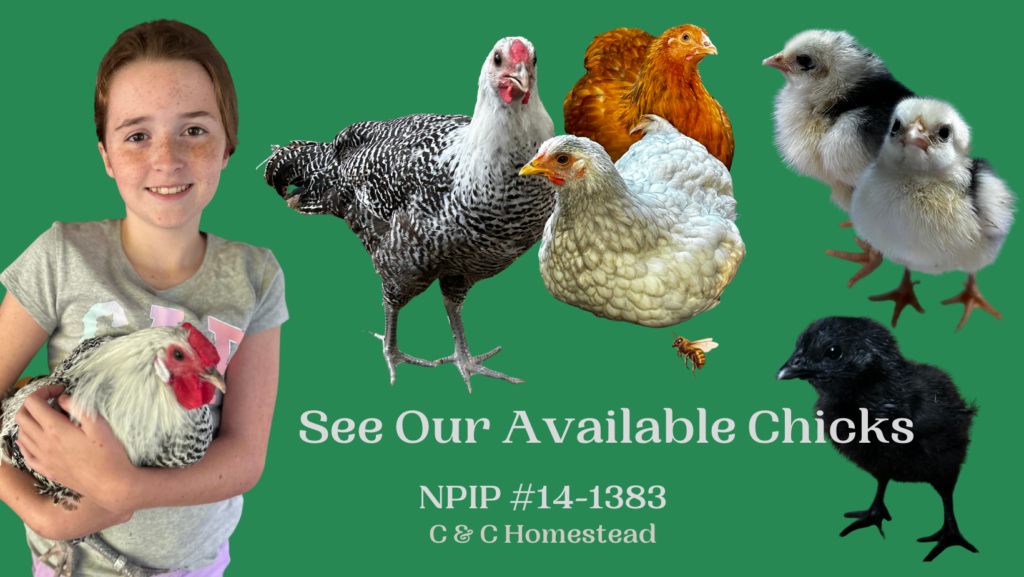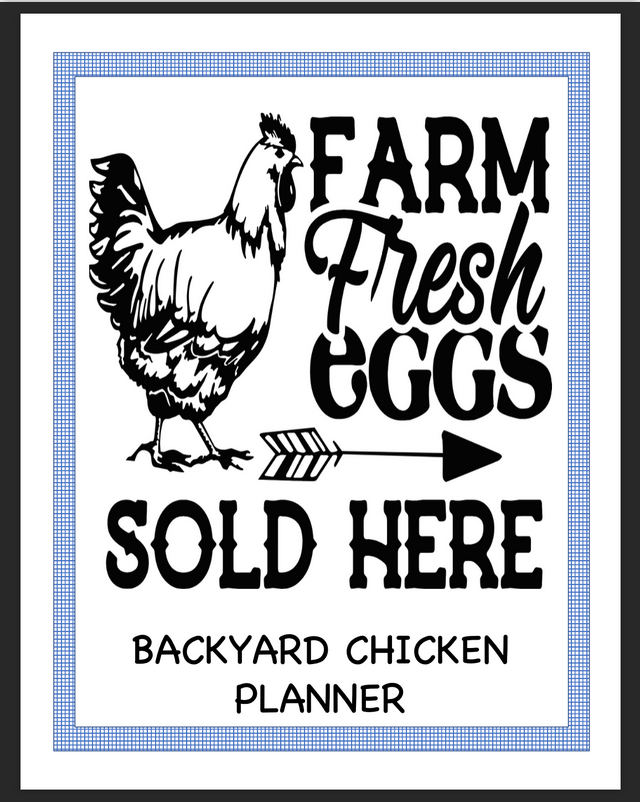Balancing Corporate & Homesteading Lifestyles
How to Choose the Best Tomatoes to Grow

Not all tomatoes are created equal! The best variety for you depends on your climate, space, and how you plan to use them. Here’s how to pick the perfect tomato for your garden! 🌱✨
1️⃣ Determinate vs. Indeterminate – Know Your Growth Type
✔️ Determinate (Bush) – Grows to a set size (3-4 feet), produces all fruit at once, then stops. Great for small spaces & canning!
✔️ Indeterminate (Vining) – Keeps growing and producing until frost, needs staking or cages. Best for fresh eating & long harvests!
💡 Tip: If you want steady tomatoes all season, go for indeterminate! If you want a big harvest at once, choose determinate.
2️⃣ Match Your Tomato to Your Climate
✔️ Short, Cool Summers? → Early Varieties like Stupice, Glacier, or Siberian (ripen in 50-60 days).
✔️ Hot, Humid Areas? → Heat-Tolerant Varieties like Solar Fire, Heatmaster, or Florida 91.
✔️ Short Growing Season? → Cherry or Grape Tomatoes ripen fast and produce heavily!
3️⃣ Choose by Purpose – What Will You Use Them For?
🥗 For Fresh Eating: Brandywine, Cherokee Purple, Sungold, Black Krim
🍅 For Sauces & Canning: Roma, San Marzano, Amish Paste
🥪 For Slicing & Sandwiches: Beefsteak, Mortgage Lifter, Big Boy
🌱 For Small Spaces & Containers: Tiny Tim, Patio Princess, Tumbling Tom
4️⃣ Disease Resistance – Protect Your Harvest
Look for disease-resistant varieties if blight, wilt, or pests are a problem. Labels like V, F, N, T indicate resistance to:
✔️ V – Verticillium Wilt
✔️ F – Fusarium Wilt
✔️ N – Nematodes
✔️ T – Tobacco Mosaic Virus
💡 Tip: Celebrity and Big Beef are excellent disease-resistant varieties!
🏆 Best All-Around Tomato Picks
✔️ Best for Beginners: Roma, Sungold, Early Girl
✔️ Best for Big Yields: Juliet, San Marzano, Beefsteak
✔️ Best Heirloom Flavor: Brandywine, Cherokee Purple, Black Krim
✔️ Best for Containers: Tiny Tim, Patio Princess, Tumbling Tom
🌱 Final Tip
Pick a mix of early, mid, and late-season tomatoes to keep the harvest going strong! 🍅
What’s your favorite tomato variety to grow? Let me know! 😊🌿
Keep the Germs Out! Protect Your Flock Like a Pro! 🐓🦸♂️

By Cluck Kent, Flock Safety Reporter
Listen up, feathered friends and farmhands! Sickness sneaks into the coop faster than a hungry hen on a spilled feed bucket—and trust me, you don’t want to deal with a flock full of sniffly, sluggish birds. That’s why I’m here to talk about something every chicken keeper needs: a rock-solid plan to KEEP THE GERMS OUT!
Lucky for you, there’s a poultry health expert who can help stop disease in its tracks—before your hens start looking like they’ve had a rough molting season. Whether you’re running a backyard flock or a full-blown farm, professional germ defense is a game-changer!
🐔 Why Should You Care About Keeping Germs Out?
Let’s break it down. Would you eat off a dirty plate? Nope. Would you let a sick stranger sneeze all over your breakfast? Didn’t think so.
Well, your chickens feel the same way! Germs come from:
❌ Dirty boots tracking in nasties from other flocks
❌ Wild birds dropping “unwanted gifts” in the run
❌ New birds carrying hidden illnesses
❌ Shared waterers that turn into bacteria soup
One sick hen can wipe out an entire flock if you’re not careful—and I, for one, don’t want to be stuck reporting another preventable poultry tragedy.
🐓 How the Pros Can Help You Lock the Germs Out!
The best defense is a strong plan—and that’s exactly what this germ-fighting poultry pro can help you build!
✔️ Flock Health Consultations – Get a custom game plan for keeping your birds in top shape.
✔️ Step-by-Step Coop Safety Checks – Find out where germs are sneaking in.
✔️ New Bird Quarantine Plans – Keep newcomers from bringing trouble into the flock.
✔️ Easy-to-Follow Clean Coop Systems – Because no one wants to spend all day scrubbing.
✔️ Training & Support – Learn the best ways to handle birds, gear, and visitors to keep sickness OUT.
It’s simple: fewer germs = healthier chickens = more eggs. Sounds like a win to me!
🐥 Don't Wait Until It’s Too Late—Protect Your Flock NOW!
I’ve seen it too many times—a keeper waits until their flock is sick, and by then, it’s a full-blown disaster. Don’t let that be you!
💥 Get expert help today! Reach out for a consultation and set up an easy, effective plan to keep your flock thriving.
🔗 The Biosecure Backyard
(Get a free eBook for visiting our page)
Tell them Cluck Kent sent you—because I don’t take safety lightly, and neither should you! 🚨🐔
Until next time, stay sharp, stay safe, and KEEP THE GERMS OUT! 🦸♂️🐓💨
What the Cluck Is Biosecurity

By Cluck Kent, Flock Safety Reporter
Listen up, fellow feathered friends and human caretakers! Cluck Kent here, your beaked beacon of truth, and today we’re talking about something that ruffles my feathers more than a surprise rainstorm—biosecurity.
Now, before you start flapping in confusion, let me break it down in chicken terms. Biosecurity is just a fancy way of saying: "Keep the germs out so we don’t get sick!" It’s like washing your hands before dinner, but for chickens. And trust me, you don’t want to be sharing a meal with a hen that’s sneezing all over the feed. Yuck.
🐓 What IS Biosecurity, Anyway?
Biosecurity is a set of simple steps to keep diseases out of the flock and stop them from spreading if they do sneak in. Think of it like this:
🚪 Keeping a clean coop = Not letting germs move in rent-free.
🚷 Limiting visitors = No uninvited guests bringing in trouble (I’m looking at you, wild birds and rodents!).
🧼 Washing up = Making sure those two-legged giants (humans) don’t track in germs from other flocks.
In short, biosecurity keeps us chickens happy, healthy, and laying those golden (okay, technically just brown or white) eggs!
🐔 Why Should You Care?
Well, let me tell you a little horror story. Once upon a time, a farmer didn’t take biosecurity seriously. She let her neighbor visit after handling her own sick chickens, and before you could say “What the cluck?!”—the whole flock caught a nasty bug. Egg production dropped, feathers fluffed in distress, and even worse… some birds didn’t make it.
This could’ve been avoided with just a few simple biosecurity steps. And trust me, when you’re a rooster in charge of the flock, you don’t want to see your ladies looking droopy instead of dazzling.
🐤 Biosecurity Basics: What YOU Can Do
Good news! Biosecurity isn’t complicated—it’s just a few smart habits. Here’s how you can keep your flock (and me) safe:
✅ Keep It Clean!
Scrub waterers, feeders, and perches regularly—just like humans should clean their dinner plates (seriously, do you all just leave dirty dishes lying around?).
✅ Limit Visitors
Don’t let just anyone waltz into the coop—especially if they’ve been around other birds. If your friend wants to visit, make them change shoes or wear boot covers. No germs allowed!
✅ Quarantine New Birds
Bringing home a new hen? Keep her separate for at least 30 days to make sure she isn’t hiding any unwanted surprises (like mites or respiratory infections).
✅ Shoes Matter
Have a coop-only pair of boots so you’re not tracking in germs from the great outdoors (or that wild turkey who thinks he owns the place).
✅ Block Wild Birds & Rodents
They might look cute, but wild birds and rodents carry diseases like avian influenza and salmonella. Keep feed covered and secure entry points to keep them out!
🚨 What Happens If Biosecurity Fails?
If you don’t follow these simple steps, you could face:
❌ Sick chickens – Nobody wants a flock full of sneezing, sluggish hens.
❌ Lost eggs – Sick birds don’t lay well, and that means fewer omelets for you!
❌ Serious diseases – Some poultry diseases (like Newcastle or avian flu) spread fast and can wipe out an entire flock.
Bottom line? A little prevention goes a long way.
🐓 Cluck Kent’s Final Report: Be a Biosecurity Superhero!
Look, I may not wear a cape, but I do know one thing: biosecurity is the key to keeping us chickens healthy and egg-cellent! It’s easy, it’s smart, and it keeps everyone happy—especially me, because I do not want to deal with sick hens whining about their runny noses.
So be a biosecurity superhero and protect your flock. Wash those hands, clean those coops, and keep those germs out!
Until next time, this is Cluck Kent, signing off—because a healthy flock is a happy flock! 🦸♂️🐔💨
Why Does Honey Taste Different in Each Season? 🍯🌸🍂
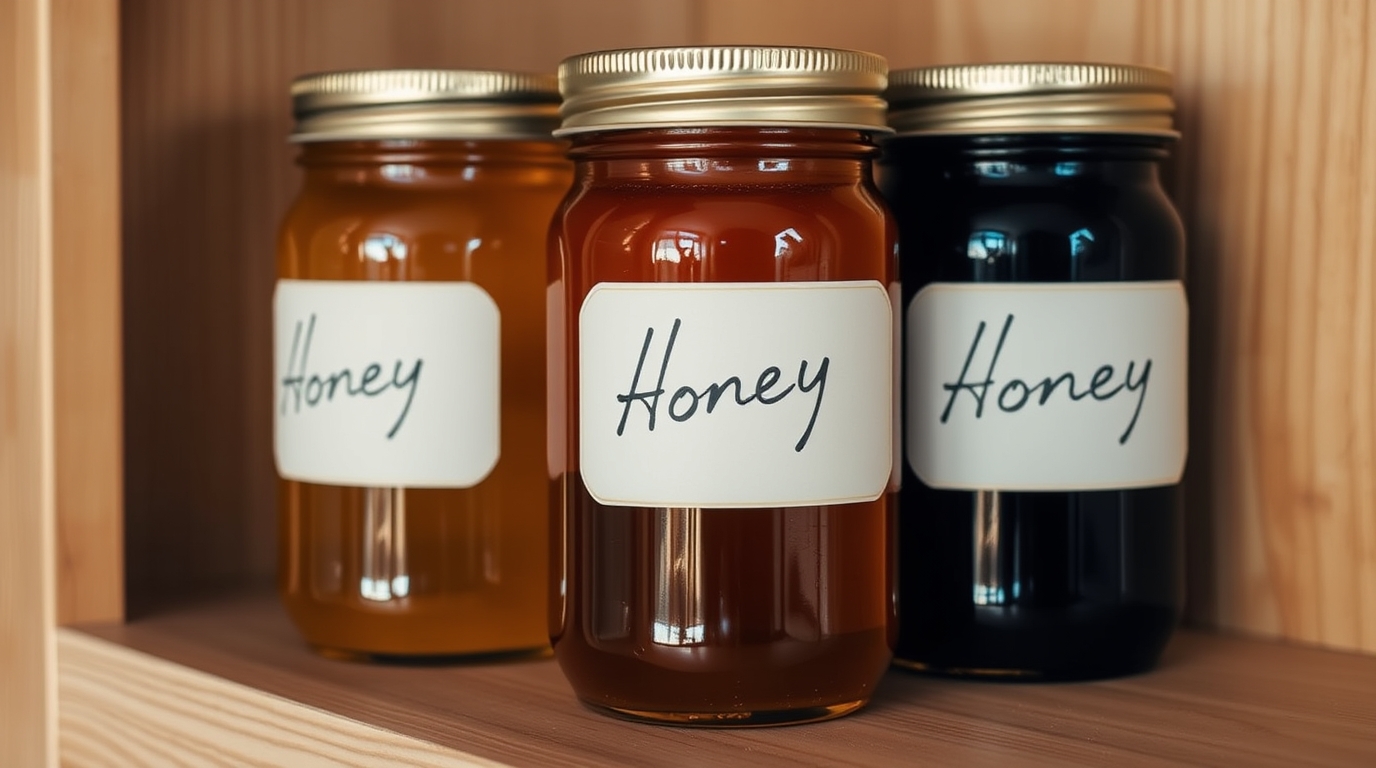
If you've ever tasted honey from different times of the year, you may have noticed variations in flavor, color, and texture. This is because honey is a direct reflection of the flowers in bloom at the time it was produced.
As nectar sources shift throughout the seasons, so does the taste and appearance of honey. Let's explore why honey changes with the seasons and what makes each batch unique.
🌱 Spring Honey: Light & Floral
Nectar Sources
In early spring, bees collect nectar from the first blossoms of the year, including:
✅ Fruit trees (apple, cherry, pear, plum)
✅ Dandelions (one of the earliest nectar sources)
✅ Clover
✅ Willow & maple blossoms
Flavor & Appearance
🌼 Light-colored honey with a delicate, floral taste.
🍏 Often has hints of fruitiness due to the nectar from fruit trees.
☁️ Smooth texture, sometimes with a slightly thinner consistency.
Fun Fact:
Dandelion honey has a distinct golden color and a bold, slightly tangy taste—proof that even "weeds" have value in the world of bees!
🌞 Summer Honey: Rich & Fruity
Nectar Sources
Summer brings an abundance of nectar, resulting in a richer, more complex honey. Bees gather nectar from:
✅ Lavender, sunflowers, and blackberries
✅ Basswood (linden tree), which gives honey a light minty taste
✅ Clover and alfalfa (common in farm areas)
✅ Wildflowers, including bee balm and goldenrod
Flavor & Appearance
🍯 Amber or golden-colored honey with a smooth, well-balanced sweetness.
🍋 Citrusy, fruity, or herbal notes from plants like basswood and wildflowers.
💛 Clover honey (common in summer) is mild, sweet, and slightly buttery.
Fun Fact:
Lavender honey from summer blooms has a slightly floral and herbal aftertaste, making it a favorite for tea lovers!
🍂 Fall Honey: Dark & Bold
Nectar Sources
As summer fades into fall, bees shift to heartier nectar sources, including:
✅ Goldenrod (a major late-season nectar source)
✅ Asters (produce rich, dark honey)
✅ Buckwheat (produces one of the darkest honeys)
✅ Wild sunflowers and sage
Flavor & Appearance
🌰 Darker amber to deep brown honey due to richer, mineral-heavy nectar.
🍫 Stronger, bolder flavors—some honey can taste malty, molasses-like, or even slightly spicy.
🌾 Buckwheat honey is especially dark and robust, often compared to molasses or brown sugar.
Fun Fact:
Goldenrod honey sometimes has a spicy or licorice-like aftertaste, making it a unique addition to fall recipes!
❄️ Winter Honey? Not Quite!
Bees don’t produce fresh honey in the winter because they are huddled inside the hive, living off the honey stores they collected in the previous months. If you harvest late in the season, you’ll likely get rich, dark fall honey—but in most cases, winter is a time of honey conservation, not production.
What Else Affects Honey Flavor?
While seasonal nectar is the biggest factor, other elements play a role in how honey tastes:
🍃 Location & Climate – The same plant can produce slightly different nectar depending on weather conditions. Dry summers may lead to more concentrated nectar, while rainy seasons may dilute flavors.
🐝 Bee Species – Different species of honeybees prefer different flowers, which influences the honey's final flavor.
🍯 Raw vs. Processed Honey – Raw honey retains all its natural enzymes, pollen, and subtle flavors, while commercial honey is often blended, filtered, or heated, which can diminish unique seasonal flavors.
The Magic of Seasonal Honey
Honey is like a time capsule of the flowers in bloom when it was made—no two batches are ever exactly the same! Whether you prefer the light, floral notes of spring honey, the balanced sweetness of summer honey, or the bold, earthy richness of fall honey, each season offers its own unique flavor profile.
🍯 Tip: Try collecting honey from different times of the year and doing a taste test—you’ll be amazed at how much the flavors vary!
How to Set Up a Log for Growing Mushrooms 🍄🌿
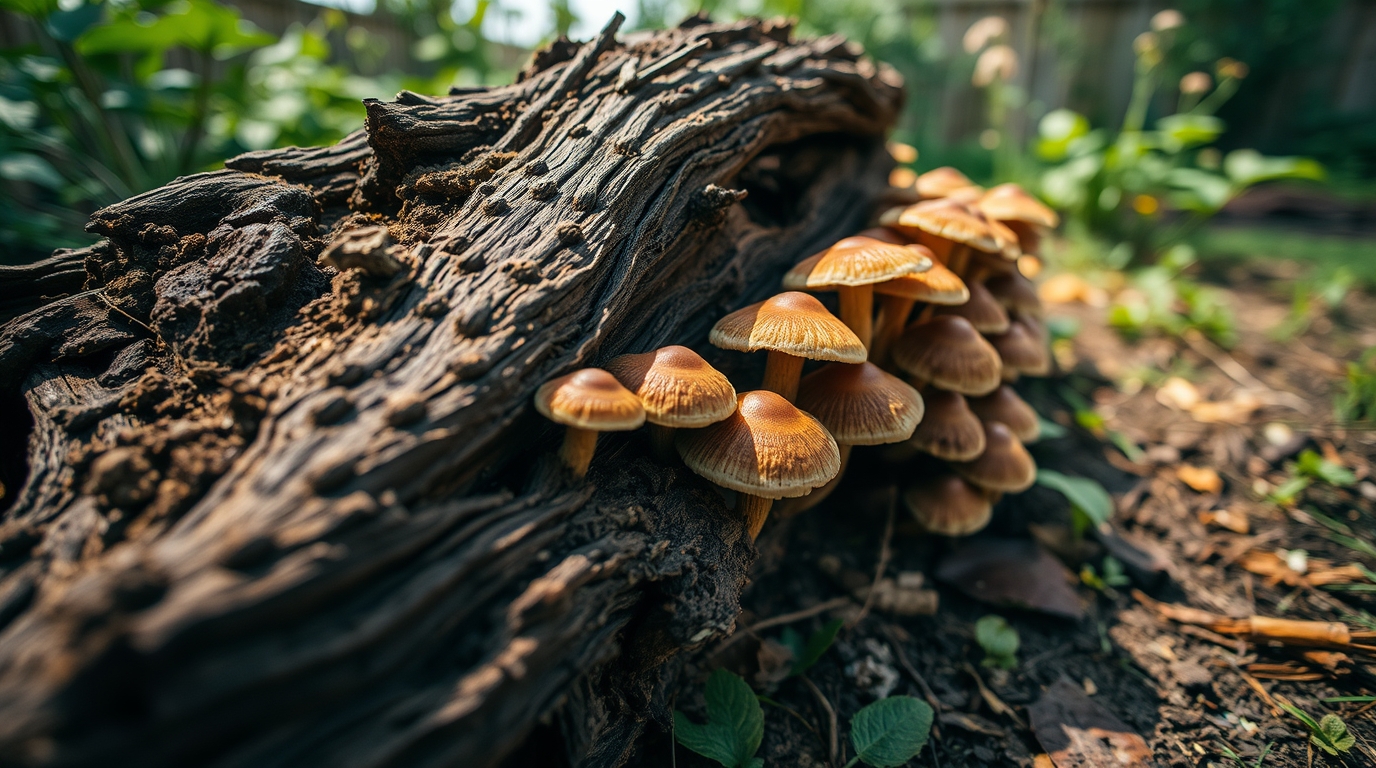
Growing mushrooms on logs is a fantastic, low-maintenance way to cultivate your own gourmet fungi while embracing nature’s rhythms.
NOTE: 🌸🐣 Spring is in the Air, and So Are Some Egg-citing Updates! 🐣🌸
Before we hatch into this week’s springtime scoop, here’s a little chick-chat: Some of the links in this newsletter are affiliate links—which means if you click and buy something, I might earn a tiny bit of scratch (not enough to plant an entire wildflower meadow for my flock, but hey, every little peck helps!).
The best part? It won’t cost you an extra dime, egg, or feather. I only recommend tried-and-true products that keep my fluffy crew happy, healthy, and thriving as we head into the sunny season.
So if you choose to support this little corner of the homesteading world by using these links—a thousand chirps of thanks to you! Now, let’s get back to the fun stuff, because there’s always something hatching on the homestead! 🌷🐥💛
--------------------------
Whether you’re dreaming of fresh shiitakes, oyster mushrooms, or lion’s mane, using logs as a growing medium mimics their natural environment, providing a steady, long-term harvest with minimal effort.
Step 1: Choose the Right Log 🌳
Not all logs are equal when it comes to growing mushrooms! The key is using fresh, hardwood logs that provide the right nutrients for your fungi.
✅ Best Wood Types for Mushroom Logs:
- Shiitake & Lion’s Mane – Oak, maple, beech, hickory
- Oyster Mushrooms – Poplar, aspen, willow, soft maple
- Reishi – Oak, maple, hemlock
❌ Avoid:
- Softwoods (pine, cedar, fir) – These contain resins that inhibit mushroom growth.
- Rotten or diseased logs – Fungi need fresh, healthy wood.
Log Size & Preparation:
📏 Diameter: 4–8 inches (too thick takes longer to colonize).
📏 Length: 3–4 feet (manageable size for stacking or moving).
📆 Cut fresh wood & let it sit for 2–4 weeks before inoculation. This allows the natural defenses in the wood to weaken, giving mushroom spores a better chance to colonize.
Step 2: Choose Your Mushroom Spawn 🍄
Mushrooms grow from mycelium, which acts like the root system of fungi. You’ll need to inoculate your log with mushroom spawn, which comes in two common forms:
✅ Plug Spawn – Wooden dowels pre-inoculated with mushroom mycelium (great for beginners).
✅ Sawdust Spawn – Loose sawdust containing mycelium (faster colonization but requires a special inoculation tool).
🔹 Where to Buy: We recommend MYYCO for purchasing your cultures.
Step 3: Inoculate the Log 🛠️
Once you have your spawn, it’s time to introduce it into your log!
🔨 Tools Needed:
✔️ Drill with 5/16” bit (for plug spawn) or 7/16” bit (for sawdust spawn)
✔️ Hammer or inoculation tool
✔️ Melted beeswax or cheese wax (to seal holes)
✔️ Small paintbrush (for applying wax)
👩🌾 How to Inoculate:
1️⃣ Drill Holes:
- Space holes every 4–6 inches in rows along the log.
- Rotate the log and repeat, creating a staggered pattern for even colonization.
2️⃣ Insert Mushroom Spawn:
- For plug spawn: Tap the dowels into the holes using a hammer.
- For sawdust spawn: Use an inoculation tool to fill each hole with spawn.
3️⃣ Seal with Wax:
- Melt beeswax or cheese wax and brush it over each hole to protect the spawn from drying out and pests.
Step 4: Incubation – Let Nature Work Its Magic 🌱
Now, the waiting game begins! Your log needs time for the mushroom mycelium to colonize the wood before fruiting begins.
🌿 Ideal Log Placement:
✔️ Shady, humid spot – Near a tree line, under shrubs, or beside a shed.
✔️ Keep off the ground – Place logs on bricks, pallets, or other logs to prevent contamination.
✔️ Maintain moisture – If dry conditions persist, soak the log for 24 hours every few weeks.
⌛ Colonization Time:
🕰️ Shiitake: 6–12 months
🕰️ Oyster: 3–6 months
🕰️ Lion’s Mane: 6–9 months
Step 5: Harvesting Your Mushrooms! 🍽️
Once the mycelium has fully colonized the log, mushrooms will begin to emerge naturally, especially after rain or seasonal changes.
How to Encourage Fruiting:
🌧️ Soak the log in water for 24 hours to stimulate growth if mushrooms don’t appear naturally.
🌡️ Temperature shifts (fall and spring) trigger fruiting in many species.
When & How to Harvest:
✔️ Pick mushrooms before the caps flatten out for the best flavor and texture.
✔️ Twist or cut them off gently at the base to avoid damaging the mycelium.
✔️ Store fresh mushrooms in a paper bag in the fridge for up to a week.
FAQs & Troubleshooting 🤔
❓ My log isn’t producing mushrooms. What’s wrong?
- Check for white mycelium under the bark—if it’s there, your log is still colonizing. Be patient!
- If the log feels very dry, soak it in water for 24 hours.
- Warmer or colder weather may delay fruiting—seasonal shifts help trigger mushrooms!
❓ Can I use logs from a fallen tree?
- Yes, as long as the tree was cut within the last few months and isn’t heavily decomposed.
❓ Will the log rot away completely?
- Over several years, yes. As the mycelium breaks down the wood, it will return nutrients to the soil—a perfect example of natural recycling!
Final Thoughts: A Fun, Low-Maintenance Way to Grow Mushrooms 🍄🌳
Growing mushrooms on logs is a rewarding, sustainable method to cultivate fresh fungi year after year with minimal effort. With the right setup and a little patience, you’ll be harvesting delicious, homegrown mushrooms while letting nature do most of the work.
🌱 Spring Tip: If you start your logs now, you could have your first mushroom flush by next fall or spring!
🔹 Where to Buy: We recommend MYYCO for purchasing your cultures.
First Aid Kit For Chicks & Chickens
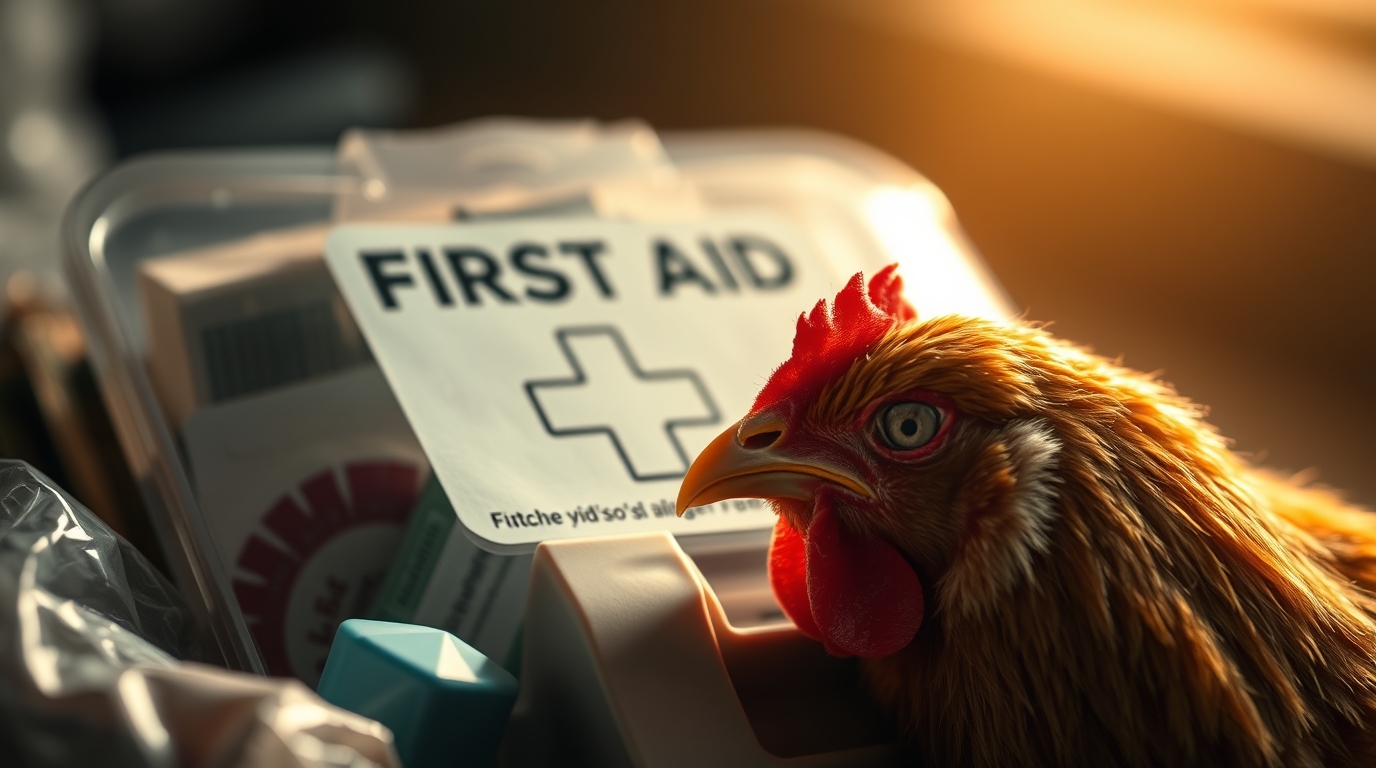
Bringing home baby chicks is exciting! But these tiny, delicate creatures need extra care, especially in their first weeks. Chicks are more vulnerable than adult chickens. Illness, injury, and sudden health issues can happen fast.
A first aid kit before they arrive ensures you're ready for any emergency.
Get our suggested first-aid checklist HERE.
1. Chicks Are Fragile and Susceptible to Health Issues
Unlike adult chickens, chicks have developing immune systems, making them more prone to common health problems such as:
- Pasty Butt – A life-threatening condition where droppings stick to their vent, blocking waste elimination.
- Dehydration – Newly hatched chicks can become weak and die quickly if they don’t drink enough.
- Leg & Foot Issues – Spraddle leg and curled toes are common in chicks and need immediate correction.
- Chilling – Chicks need stable warmth (95°F the first week) and can quickly suffer from hypothermia.
- Injuries from Other Chicks – Pecking, trampling, or being squished in corners can cause wounds or bruising.
Having a first aid kit ensures you can treat these issues immediately before they become serious.
2. Chicks Decline Quickly Without Intervention
Since chicks are small and developing rapidly, even minor problems can escalate within hours. A chick that seems a little weak in the morning could be near death by evening if it isn’t treated. A stocked first aid kit allows you to:
✅ Provide warmth and hydration immediately.
✅ Treat minor wounds before they become infected.
✅ Correct leg deformities early for a better chance of recovery.
3. Finding a Vet for Chicks Can Be Difficult
Many veterinarians don’t specialize in poultry, and even those who do may not treat baby chicks. Having a DIY first aid kit allows you to handle minor issues yourself and stabilize chicks if professional help is needed.
4. Early Prevention Reduces Long-Term Problems
Some chick health issues, like leg deformities or pasty butt, can cause permanent damage if not addressed early. A first aid kit helps you take action before problems become irreversible.
5. A First Aid Kit Gives You Peace of Mind
Raising chicks is a rewarding experience, but they can be delicate and unpredictable in their early weeks. Having a first aid kit ensures that if something goes wrong, you’re prepared to act quickly, reducing stress for both you and your little flock.
💡 Pro Tip: Assemble your kit before your chicks arrive so you're ready from day one! It’s always better to have it and not need it than to need it and not have it.
Get our suggested first-aid checklist HERE.
Imprinting: How Chicks Recognize Their Mother & Siblings After Hatching
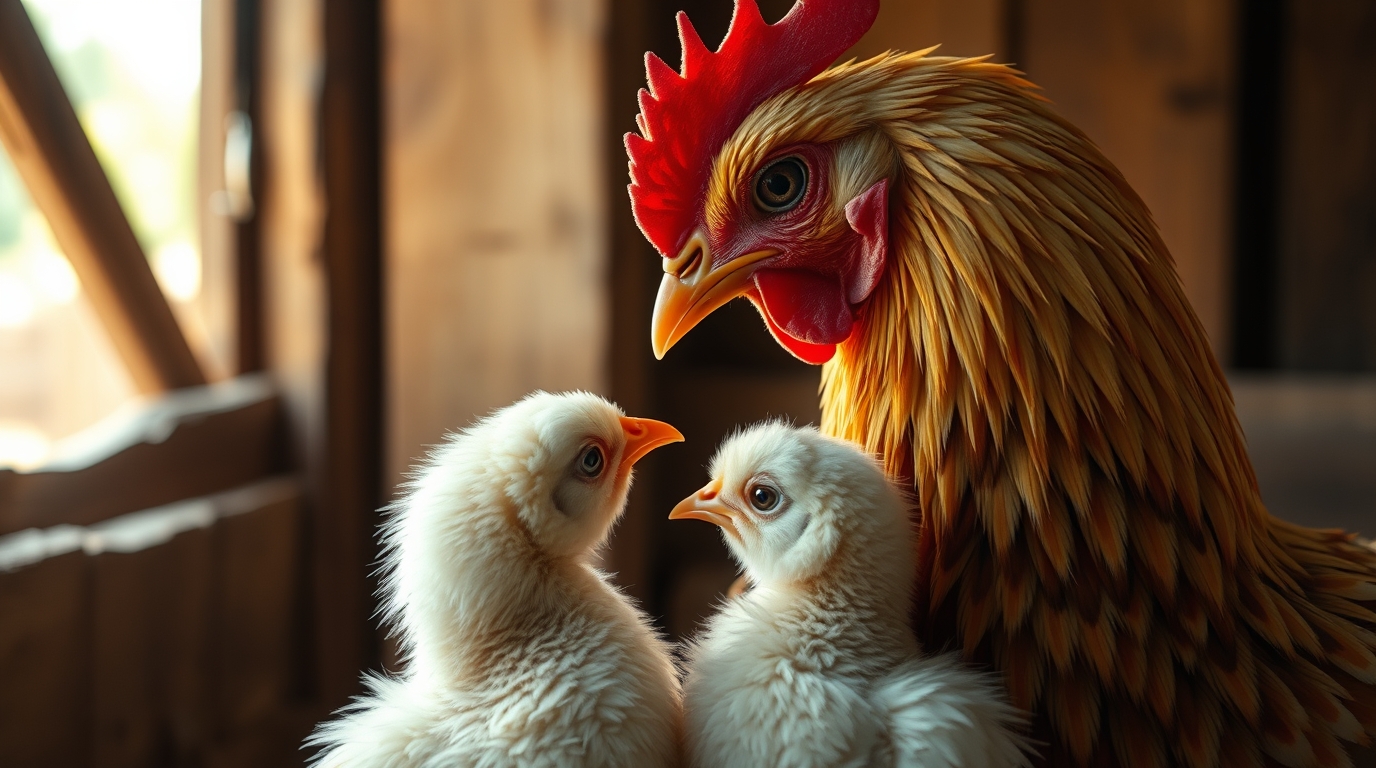
One of the most fascinating behaviors in baby chicks is their ability to imprint shortly after hatching. This instinctive process helps them recognize their mother, siblings, and even their human caretakers in some cases.
Imprinting is crucial for survival, ensuring that chicks bond with their mother, follow her for protection, and learn essential behaviors like foraging, dust bathing, and roosting.
Let’s explore imprinting in depth—how it works, why it happens, and how it can even lead to some adorable (and sometimes comical) behaviors in backyard chicks!
🐣 What Is Imprinting?
Imprinting is a rapid learning process that occurs in young birds, allowing them to form a strong attachment to the first moving object they see after hatching. In nature, this is typically their mother hen, but in artificial incubation settings, chicks may imprint on humans, other animals, or even inanimate objects if those are the first things they encounter.
How Imprinting Works:
✅ Happens within a critical period – The first 24-48 hours after hatching are when imprinting is strongest.
✅ Irreversible bond – Once a chick imprints, this bond is permanent and cannot be undone or changed.
✅ Follows the imprinted figure – Chicks will follow their mother (or whatever they’ve imprinted on) everywhere, mimicking behaviors.
✅ Survival instinct – In the wild, this ensures chicks stay close to their mother for warmth, food, and protection.
Fun Fact: 🐤 The famous scientist Konrad Lorenz discovered imprinting while studying geese. He found that goslings imprinted on him instead of their mother and followed him everywhere—even when he walked into water!
🐔 Why Is Imprinting Important for Chicks?
Imprinting plays a vital role in the early development of chicks, ensuring they receive the care, protection, and social learning they need to survive.
1️⃣ Safety & Protection
Chicks instinctively follow their imprinted figure, keeping them close to a safe leader. In the wild, staying near the mother hen protects them from predators, cold weather, and injuries.
2️⃣ Learning Essential Behaviors
By watching and mimicking their mother, chicks learn critical survival skills, including:
- Foraging – Learning what’s safe to eat.
- Pecking & scratching – Chickens instinctively peck, but imprinting helps them refine their food-searching techniques.
- Dust bathing – A key behavior that keeps their feathers clean and free of parasites.
- Roosting & flock communication – Understanding social cues and where to sleep safely.
3️⃣ Social Bonding & Flock Development
Chicks also imprint on their siblings, helping them recognize members of their group. This fosters strong flock cohesion, reducing aggression and encouraging social bonding as they grow.
Fun Fact: 🐥 Chicks raised together develop their own social hierarchy early on, which often lasts into adulthood. This early imprinting on siblings can reduce pecking order disputes later!
🤝 Can Chicks Imprint on Humans?
Yes! Chicks raised in a brooder without a mother hen often imprint on their human caretakers. This is why hand-raised chicks tend to be:
✔️ More friendly and attached to people.
✔️ More likely to follow their owner around like a mother hen.
✔️ Easier to handle and tame compared to chicks raised by a broody hen.
However, there are some downsides to human imprinting:
⚠️ Chicks may struggle to integrate with other chickens later because they see humans as their "flock."
⚠️ Overly imprinted chicks may become anxious if left alone or separated from their human caretaker.
⚠️ They may lack natural chicken behaviors since they didn’t learn from a hen.
To avoid issues, it’s best to raise chicks in small groups so they imprint on each other while still bonding with humans.
Fun Fact: 🐤 Some chickens that imprint on humans will try to perch on their owner’s shoulder or snuggle into their lap, just like they would with their mother hen!
🔬 The Science Behind Imprinting
Imprinting is controlled by innate brain mechanisms that create a rapid memory association with a parental figure. Scientists have found that in chicks:
📌 A specific part of the brain called the hyperstriatum ventrale is responsible for imprinting.
📌 Hormones like oxytocin (the "bonding hormone") play a role in strengthening the connection between a chick and its imprinted figure.
📌 Chicks can recognize and remember their mother’s voice even before hatching—this helps reinforce the imprinting bond after they emerge from the egg!
Fun Fact: 🐣 Mother hens talk to their chicks before they hatch by clucking softly, and the chicks respond by chirping from inside the egg!
🧐 Can Chicks Imprint on Other Animals?
Yes! If exposed to other animals during their imprinting period, chicks may see them as their parent or flock. Some unusual cases include:
🐶 Dogs – Chicks raised with gentle farm dogs sometimes follow them instead of humans or other chickens.
🐱 Cats – If raised in a calm environment, some chicks will imprint on a cat, leading to adorable but unusual friendships.
🦆 Ducks or Geese – Chicks hatched alongside ducklings may imprint on them and even attempt to swim!
❓ Can Imprinting Be Changed?
Not really. Once a chick has imprinted on something, the bond is permanent and cannot be reversed. While a chick may later integrate into a flock of chickens, it will always recognize its first imprinted figure as "mother."
🐥 Conclusion: The Power of Imprinting in Chicks
Imprinting is one of the most amazing survival instincts in baby chicks, ensuring they stay close to their mother, learn essential behaviors, and develop social bonds. Whether imprinting on a hen, a human, or even another animal, this early attachment shapes their behavior for life.
If you’re raising chicks, understanding imprinting can help you create a healthy, happy environment where they feel safe and bonded—whether with their mother hen or with you as their caretaker!
The Worm Whisperer’s Woes: A Lesson in Snacking Safely

By Cluck Kent, Flock Safety Reporter
Hey there, flock followers! It’s me again—Cluck Kent, the brave, the bold, the always-hungry backyard superhero. Today’s adventure? A daring snack gone slightly fowl.
The Case of the Mysterious Mudprints

Cluck Kent’s Biosecurity Blunders
By Cluck Kent, Flock Safety Reporter
Hey there, flock fans! It’s me, Cluck Kent, your friendly neighborhood feathered superhero. I spend my days patrolling the backyard, scratching for justice, and—apparently—making a few biosecurity bloopers along the way. Who knew saving the world (or at least the flock) could be so complicated?
Let me tell you about the time I, Cluck Kent, unknowingly became a villain in my own story.
The Incident: Muddy Missteps
One fine morning, I was on an important mission: Investigate the compost pile. It’s full of mysteries—wiggly worms, crunchy beetles, and questionable leftovers. After a thorough examination (and maybe a snack or two), I strutted back to the coop, feeling quite accomplished. But as soon as I stepped inside—uh-oh.
“Cluck Kent!” Mom squawked. “Where did all these muddy footprints come from?!”
I froze. I might have forgotten to wipe my feet. And by might, I mean I absolutely did not wipe my feet. Turns out, I’d tracked a delightful mixture of compost goo and who-knows-what straight into the coop.
The Lesson: What’s the Big Deal?
Mom grumbled something about “cross-contamination.” I had no idea what that meant, but it sounded serious. She explained that dirty feet (yes, mine) could carry bacteria or parasites into the coop, which could make me and my flockmates sick.
Oops. My bad.
The Fix: Super-Chicken Solutions
Mom decided to help me out (because even superheroes need a good sidekick). She set up a gravel path leading from the compost pile to the coop—less mud, fewer problems! She also added a boot-scraping mat (for herself, not for me… rude) and reminded everyone to keep the human shoes and chicken areas as separate as possible.
Now, I make sure to shake off before heading back to the coop. You know, a dramatic fluffing—feathers flying, dirt raining down. It looks cool and keeps things clean.
Moral of the Story
Even the best of us make mistakes. But with a few tweaks (and a little less compost pile exploration), we can keep the flock happy, healthy, and mud-free.
Stay clucky, stay clean, and remember—superheroes always learn from their bloopers! 🦸♂️🐓
Honey: Raw vs Processed
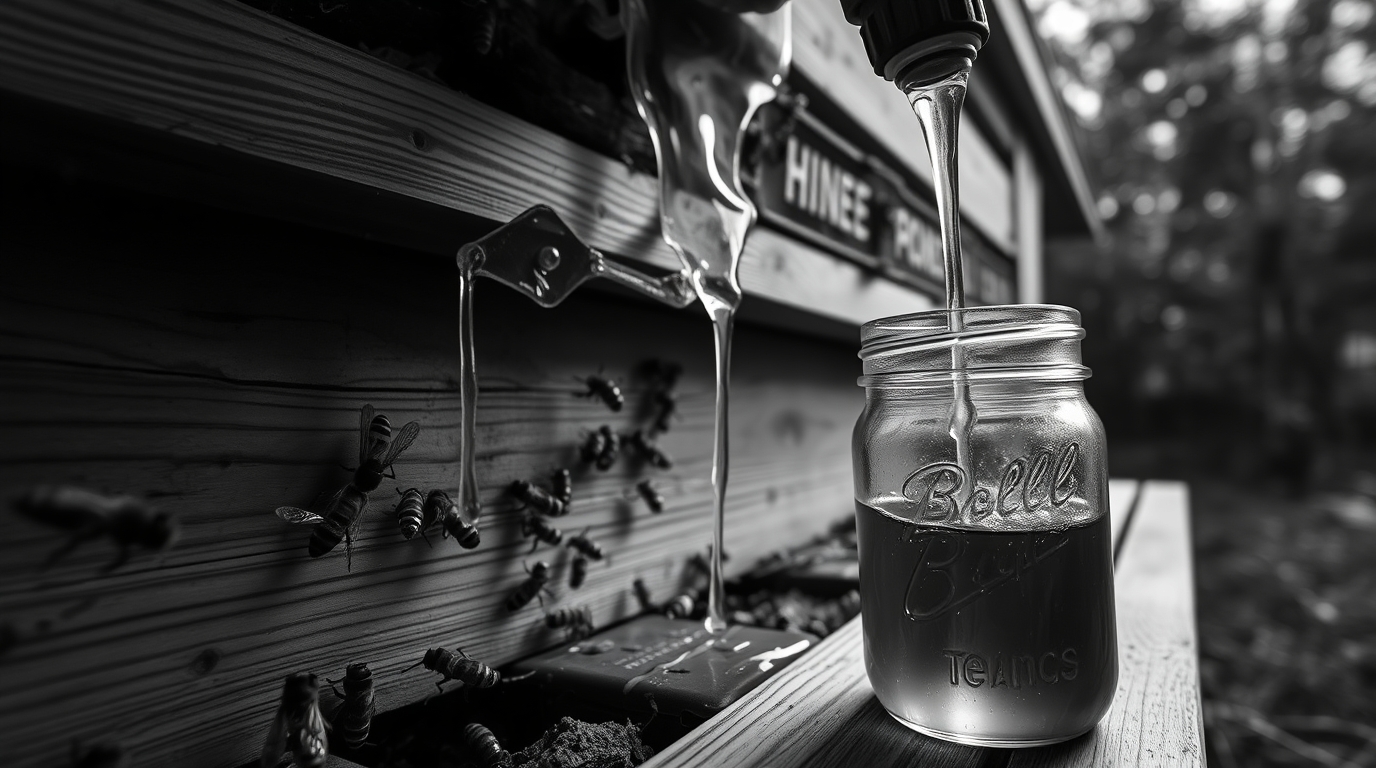
Honey is one of nature’s most incredible superfoods, known for its immune-boosting, antibacterial, and antioxidant-rich properties. But did you know that most store-bought honey is heavily processed, stripping away many of its natural benefits?
Let’s break down the key differences between raw and processed honey and why choosing the right one makes a big difference for your health.
What Is Raw Honey?
Raw honey comes straight from the hive with minimal processing. It is only lightly strained to remove wax or debris but retains:
✔️ Natural enzymes
✔️ Pollen & propolis (great for immunity & allergy relief)
✔️ High levels of antioxidants
✔️ Rich antibacterial properties
Raw honey often has a thicker, more opaque appearance and may crystallize over time—a natural sign of purity.
What Is Processed Honey?
Processed honey is heated, pasteurized, and ultra-filtered to remove pollen and small particles. While this gives it a clearer, smoother look, it also:
❌ Destroys beneficial enzymes
❌ Reduces antioxidant levels
❌ Removes pollen, which is helpful for allergy relief
❌ May contain added sugars or syrups
Many commercial honey brands blend different honey sources or even dilute it with corn syrup, making it less nutritious and far from its original form.
Why Raw Honey Is Better for Your Health
1. Supports Immunity & Allergy Relief
Raw honey contains local pollen, which may help reduce seasonal allergies by gradually building tolerance. It also strengthens the immune system thanks to its natural antibacterial and antifungal compounds.
2. Powerful Antibacterial & Wound-Healing Properties
Raw honey, especially Manuka honey, is known for its antimicrobial effects. It has been used in traditional medicine for:
✔️ Treating minor burns & wounds
✔️ Fighting bacterial infections
✔️ Soothing sore throats
3. Rich in Antioxidants
Raw honey is packed with polyphenols, which help reduce inflammation, support heart health, and fight free radicals that contribute to aging and disease.
4. Natural Digestive Aid
Raw honey contains prebiotics that support gut health and help balance good bacteria in the digestive system. It can also be helpful for acid reflux and minor digestive discomfort.
Does Heating Destroy Honey’s Benefits?
Yes! Heating honey over 95°F (35°C) destroys many of its natural enzymes, reducing its antioxidant and antibacterial properties. Pasteurization (often done at 160°F (71°C)) makes honey less effective medicinally and lowers its overall nutritional value.
How to Keep Honey’s Nutrients Intact
✔️ Use raw honey in warm, not boiling, beverages
✔️ Store it at room temperature
✔️ Use it as a spread, in salad dressings, or drizzled over food
How to Identify Real Raw Honey
With so many brands claiming to sell "raw" honey, here’s how to find the real deal:
✔️ Crystallization – Raw honey thickens over time; if it stays liquid forever, it's likely processed.
✔️ Cloudy Appearance – Natural honey is not always clear; small bits of pollen and propolis are a good sign!
✔️ Label Transparency – Look for "unfiltered," "unpasteurized," and "100% raw" on the label.
✔️ Buy from Local Beekeepers – Small-scale producers often provide the best quality raw honey.
Final Thoughts: Should You Choose Raw or Processed Honey?
If you want maximum health benefits, raw honey is the best choice. It retains its natural enzymes, antioxidants, and immune-boosting compounds, making it far superior to highly processed store-bought honey.
Whether you're using honey for immune support, allergies, digestion, or as a natural sweetener, choosing raw honey ensures you get all the benefits nature intended! 🍯🐝
Have you noticed a difference between raw and processed honey? Let us know in the comments.
